Loosening Up Your Hips with #DelosYourself Therapy
[Disclosure: This post is a part of a sponsorship with Delos Therapy. As always, we only talk about the places, people, things and experiences we truly love.]
Tight hips. If you’ve ever been a runner, been around a runner, or read anything about running on the internet, you know tight hips are often the bane of a runner’s existence.
“It’s accepted as fact that ‘I’m a runner, I have tight hips, there’s nothing I can do about it’ – there is!” Eric Owens, co-founder of Delos Therapy, exclaims. “Tightness can be treated and prevented.”
And it’s not only runners that get tight hips — the pain can strike desk workers, high intensity interval training aficionados, and yes, even your incredibly bendy yoga instructor. With marathon training season in full force, we asked Delos for the 4-1-1 on tight hips, and what runners and non-runners alike need to know to keep their hips loose.
What causes tight hips?
In general, tight hips are pretty tied to whatever portion of the hip is being used the most, explains Owens. “It really shows how repetitive use causes that muscle tightness.”
You might not know it, but your hips are composed of what Owens calls “the four corners:” hip flexors, lateral hips, posterior hips, and medial hips. Owens goes on to say that Delos sees hip tightness most often with runners and people who do high intensity interval training (HIIT) frequently.
“Any kind of agility work — box jumps, lateral movements, things that use and recruit those muscles specifically — can lead to hip tightness. For athletes, tennis players and football players are at risk. Runners often develop tight hip flexors. Anyone who does a lot of lateral movements can develop tightness in the lateral hips. Also, people who lift a lot of weights might have tight posterior hips.”
Desk workers aren’t immune from hip tightness, even if you think you balance it out with running before or after work. Your lower body is at a 90º angle while your upper body is hunched over all day, straining the hip flexors. But a nice, easy run should shake out that tightness, right?
Not really, says Owens. “You’re going for a run using those muscles [hip flexors] repetitively after they’ve been in that right angle all day — it’s not a good mixture. Sitting at a desk for 9 to 10 hours every day is inactivity, and you need a healthy balance of activity,” which means changing positions frequently during the day to avoid letting muscles tighten.
Will you feel hip tightness in other areas of your body?
While hip flexors are probably the most talked about areas of hip tightness, remember the “four corners” described by Owens when diagnosing your hip tightness.
Your posterior hips can pull on your lower back and cause low back pain, which is one of the more common symptoms Owens sees. Your lateral hips can pull on your lateral IT band and cause knee pain. Your hip flexors can cause pain in your groin, anterior knee, and of course, right where the tightness is located in your hip flexor. Your medial hips might pull on your inferior abs and your psoas.
“It all depends on the degree of tightness and where it pulls, plus how far the progression is,” shares Owens.
Owens and Delos make sure to do what they call “360º hips,” which means treating all sides of the hips to avoid creating imbalances.
“Hip tightness generally starts on one side,” illustrates Owens. “As one side becomes tighter and those fibers are incapable of being used or recruited, your body compensates by using the other side. Then, that other side is working harder because the tighter side can’t carry its load; now, the other side is taking on wear and tear at an accelerated rate, so it becomes tight.” In a nutshell, then, hip tightness starts on one side and then builds and accelerates on the other side.
How do you treat hip tightness?
Your tightness needs to be stretched, says Owens, but it needs to be stretched with pressure rather than just by lengthening. In fact, ignoring the pressure side of loosening the hips can often make traditionally “restorative” activities like yoga or Pilates counterproductive.
With so many of today’s yoga classes adding in strength and resistance training, Owens wants to make it clear that yoga “doesn’t get a free pass,” as he puts it.
“Yoga is still repetitive use, still resistance training, still using and recruiting muscle fibers in a repetitive way,” he emphasizes. “Once tightness has occurred, stretching will make the loose or elastic fibers more loose — but at the same time, it’ll make the tight fibers even tighter.”
So, all those pigeon poses and figure four stretches you think are helping so much? Yeah, they might actually be making your hips even tighter.
“Think in 3D rather than pulling the muscles apart by lengthening,” Owens illustrates. “That’s what we do at Delos.” Once your tissues are loosened through all-around, three-dimensional stretching, “that’s when Pilates and yoga become effective, because the tissue can work.”
How Delos treats hip tightness
Delos treats all hip tightness with their 360º approach, says Owens. They’ll spend time on your hip flexors, posterior hips, lateral hips, and medial hips. Throughout your treatment, your therapist will adjust your legs, switching among various bent knee, lengthened leg, and pre-stretch positions with one leg dangling to really get in there.


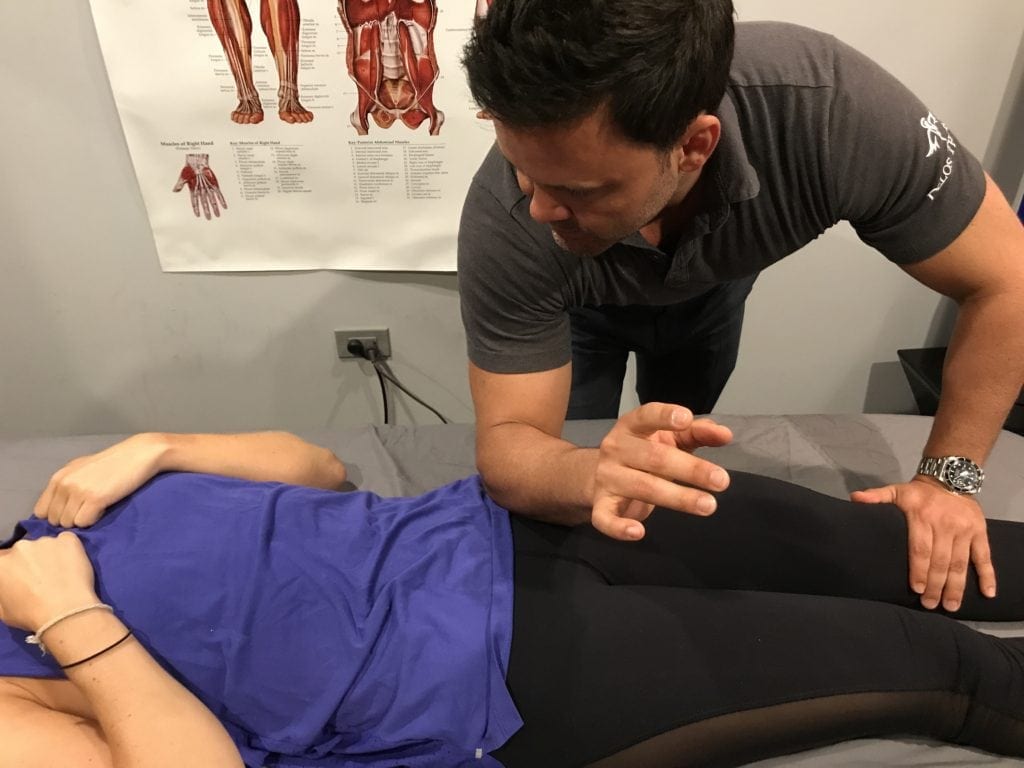
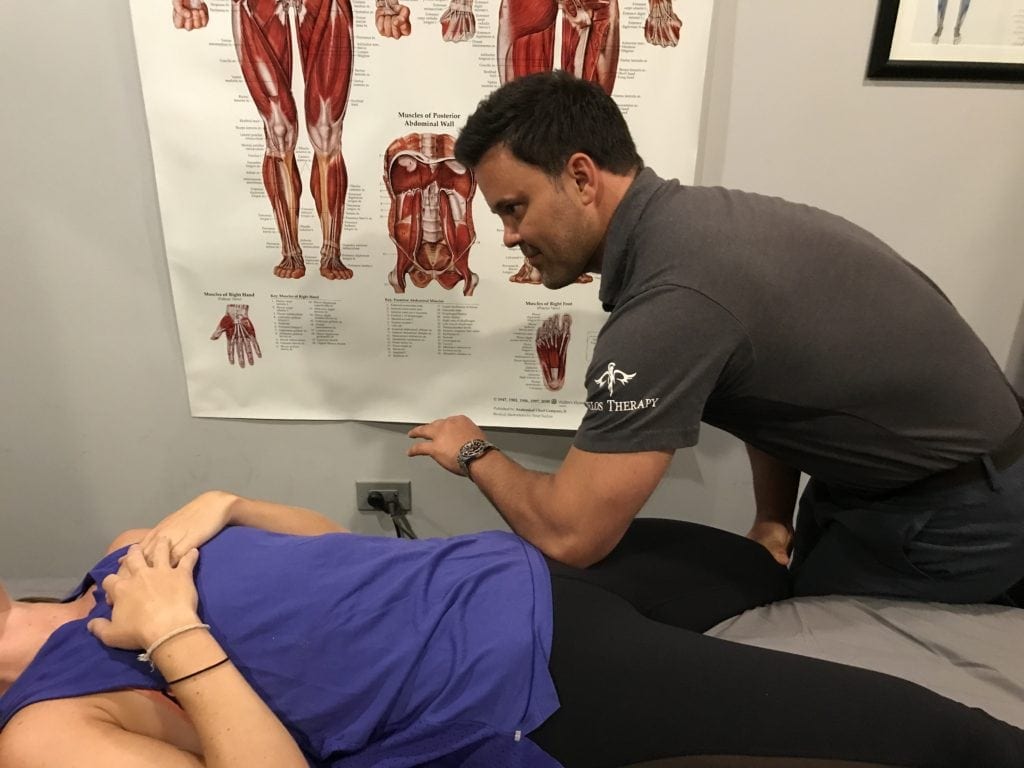
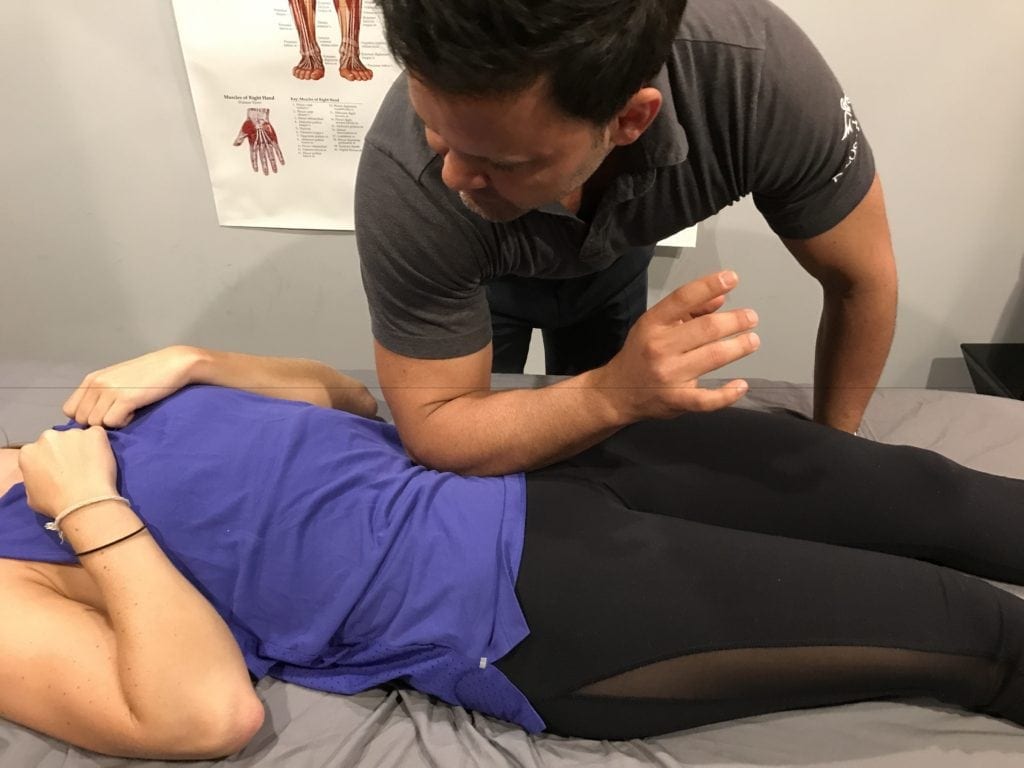
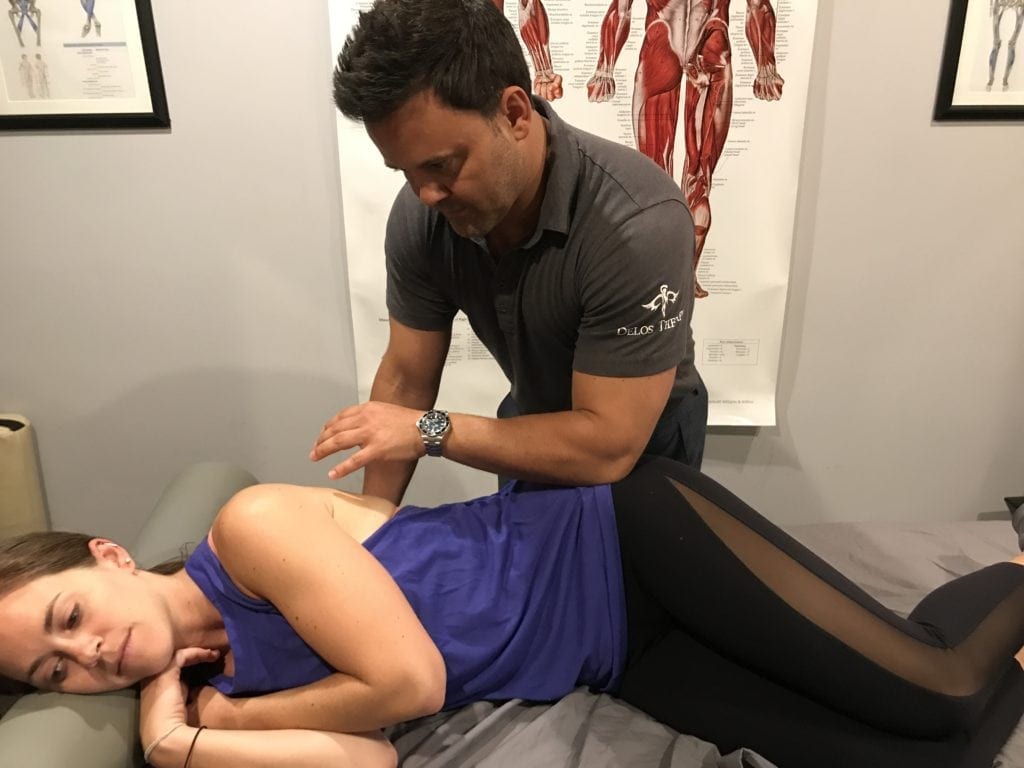
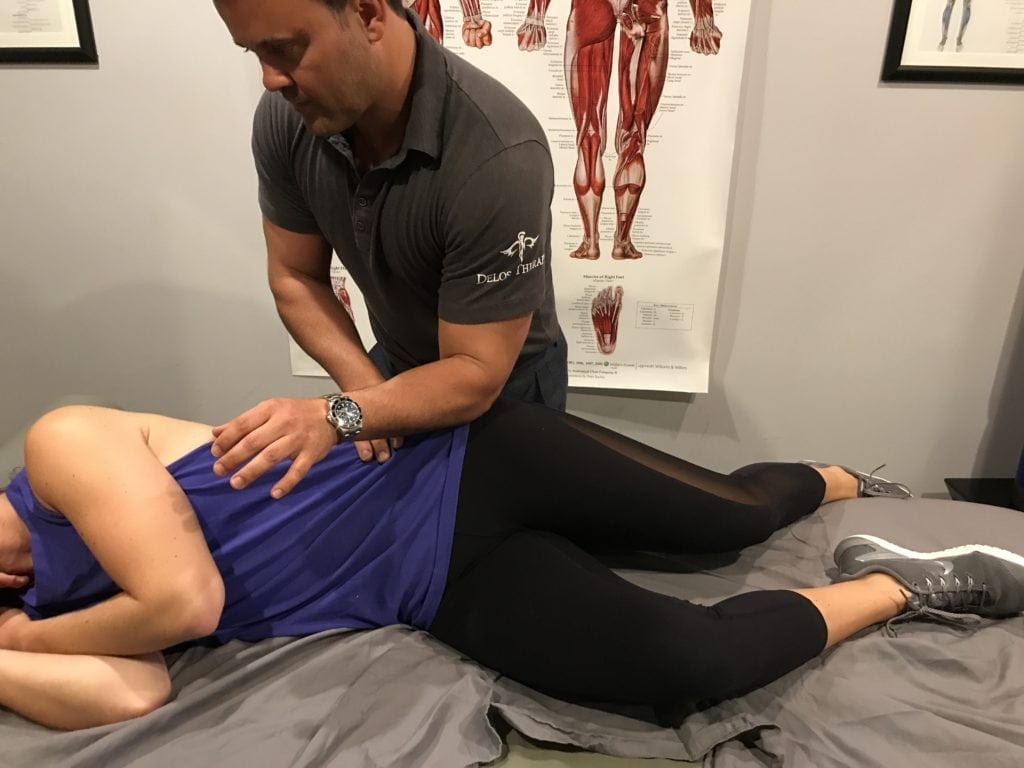
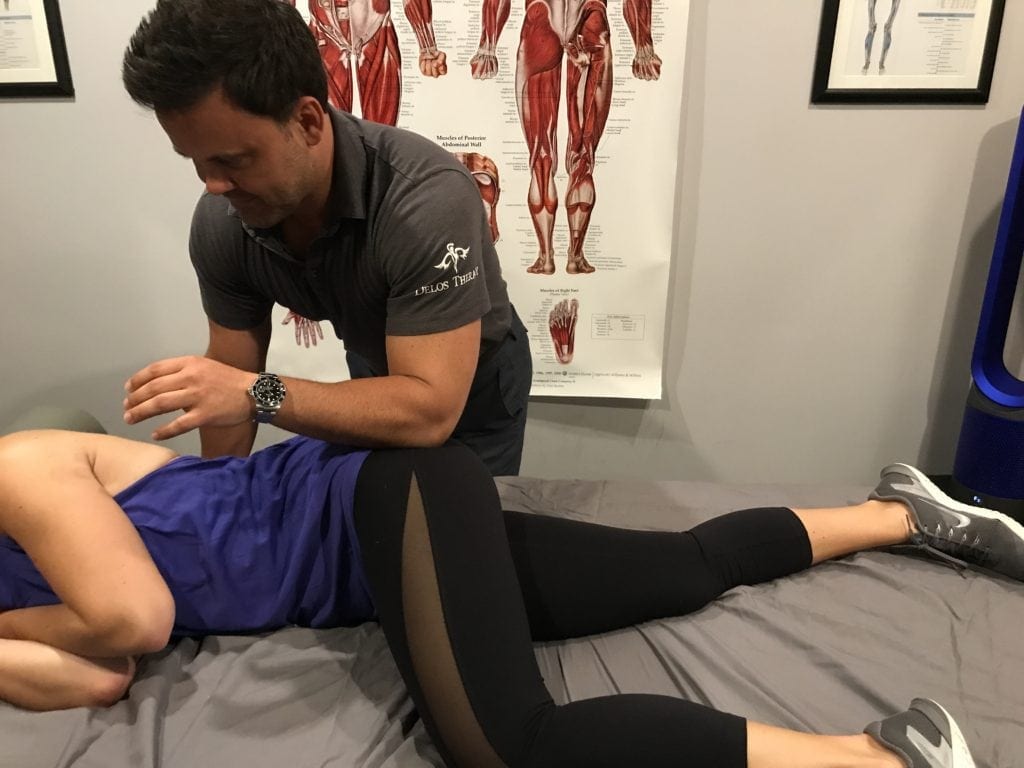

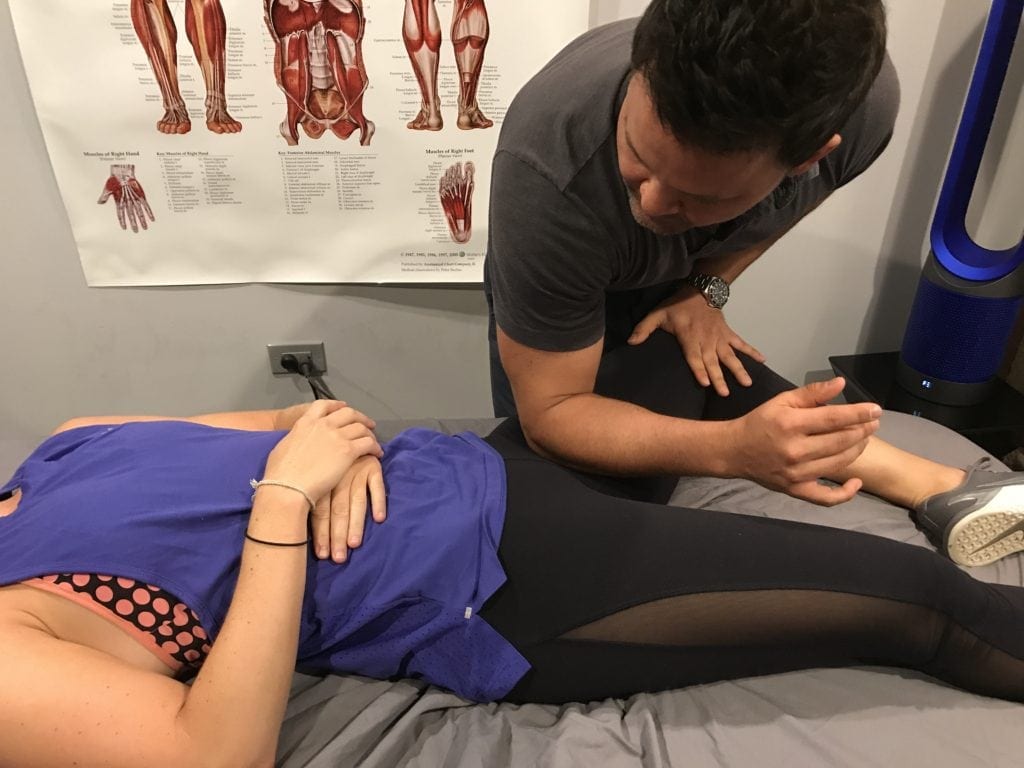
How to #DelosYourself at home
A Thera Cane and a lacrosse ball (or Knobble, if you have one) are your tools of the trade for an at-home 360º hip treatment.
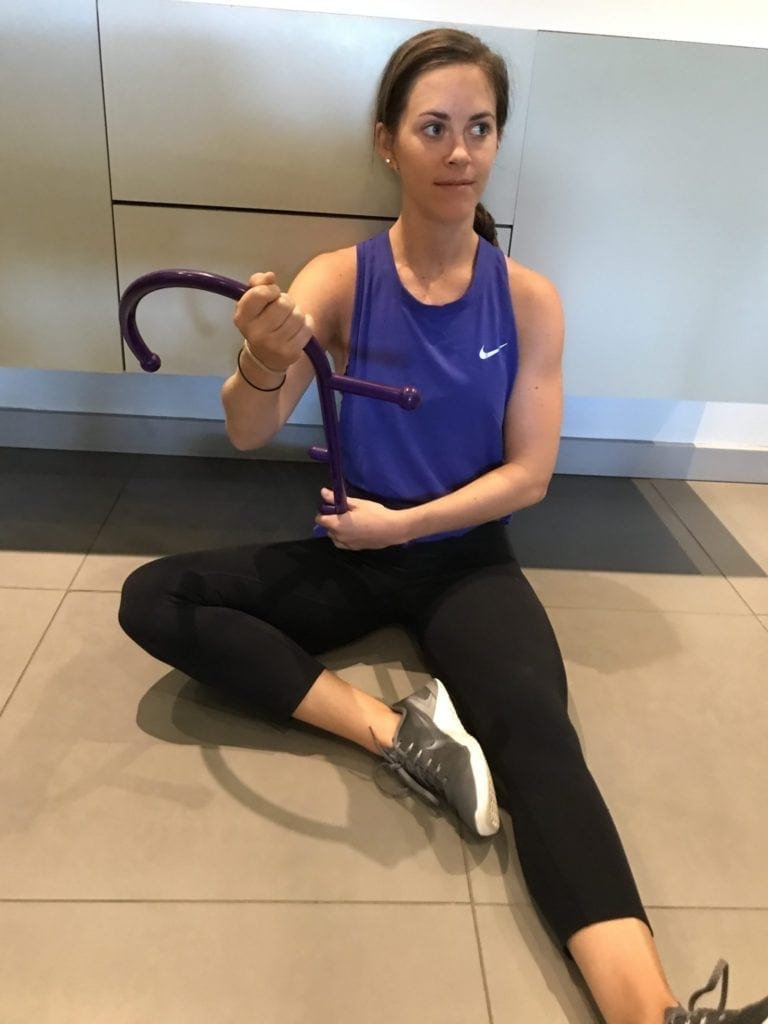
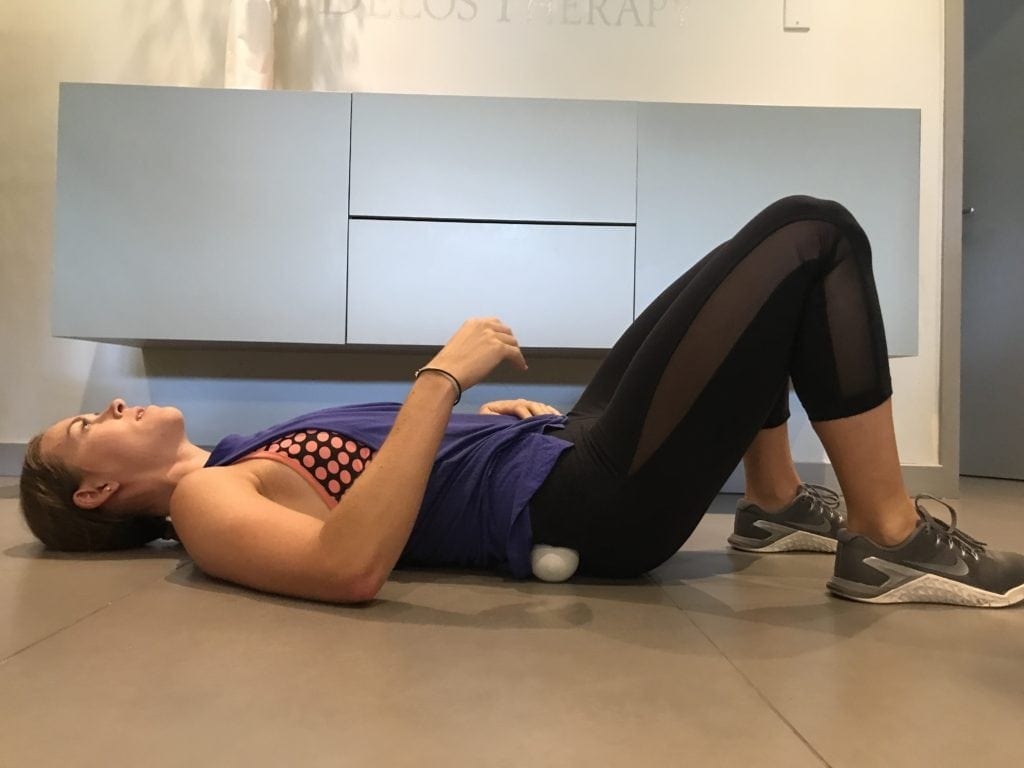
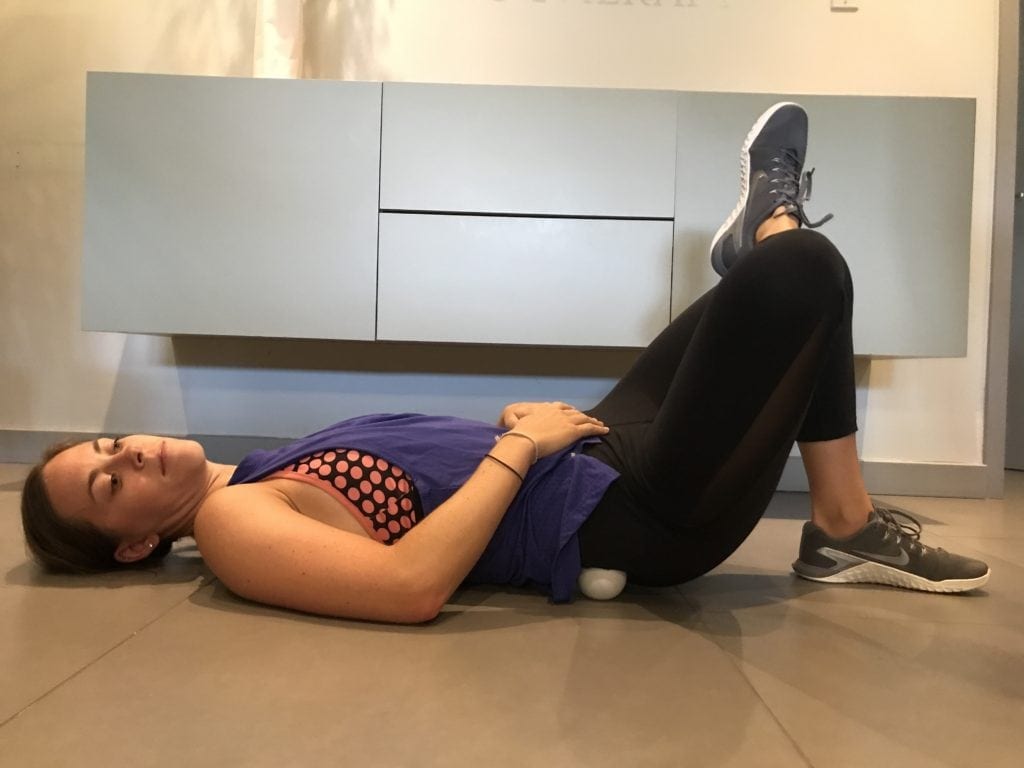
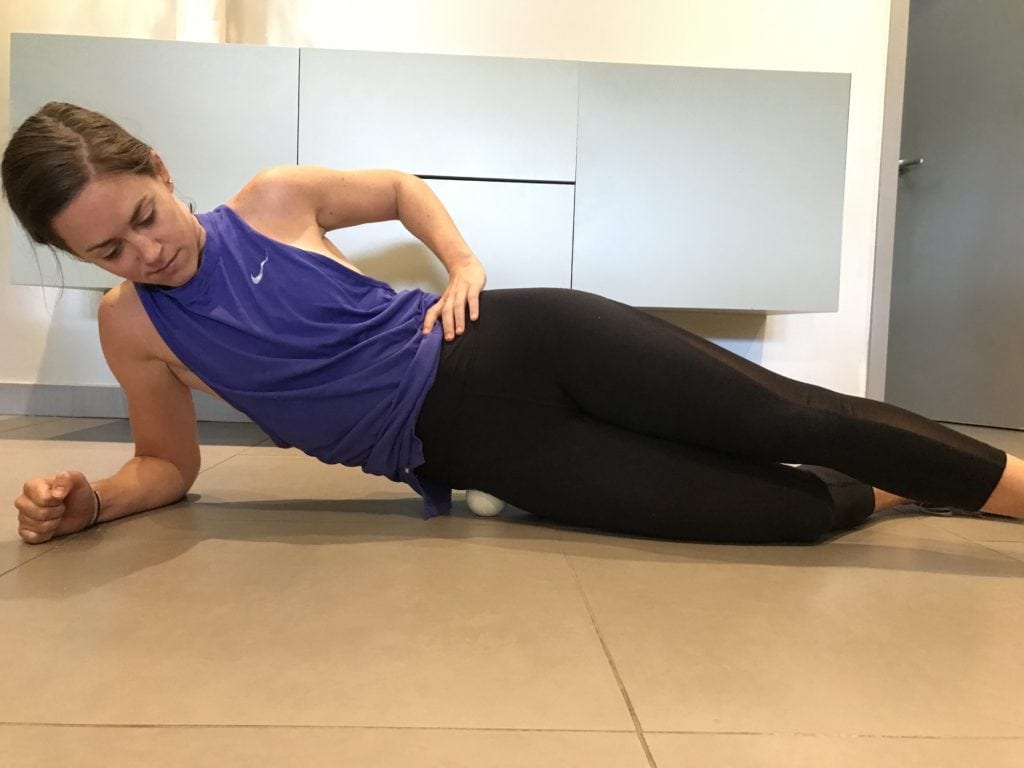
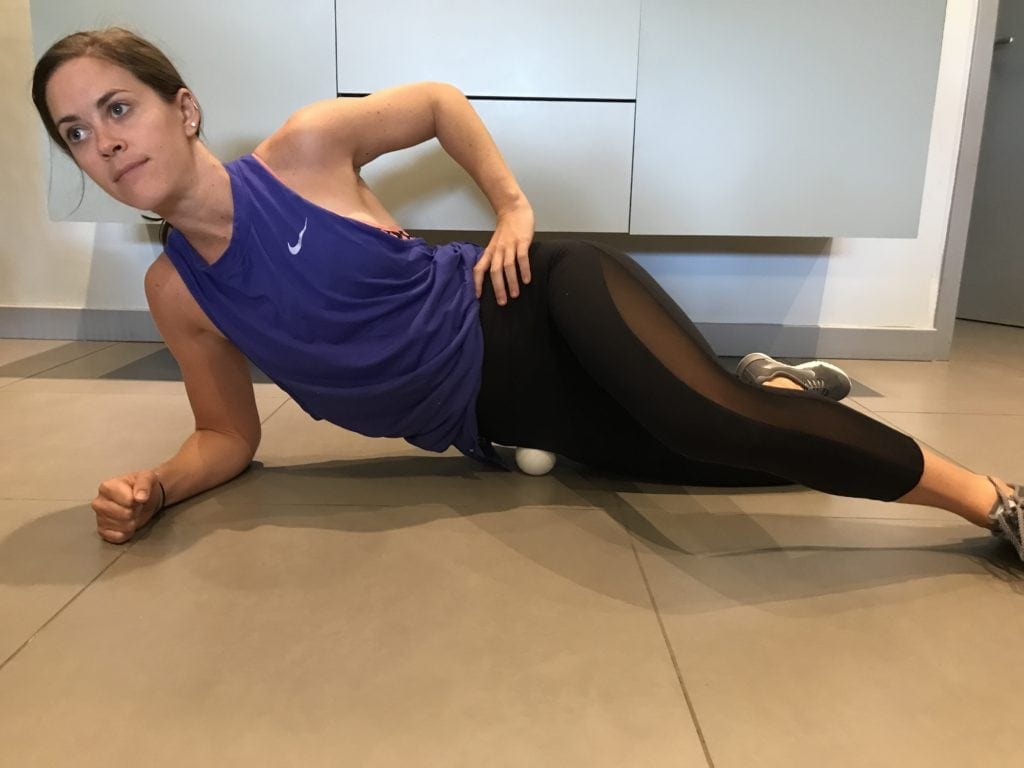

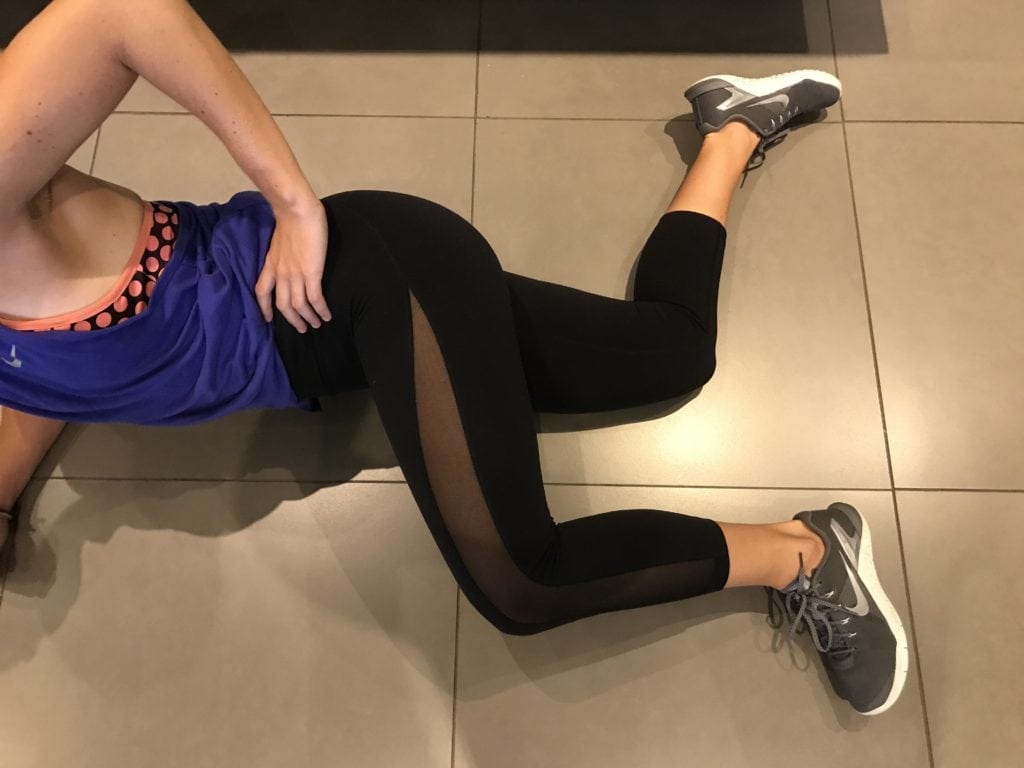
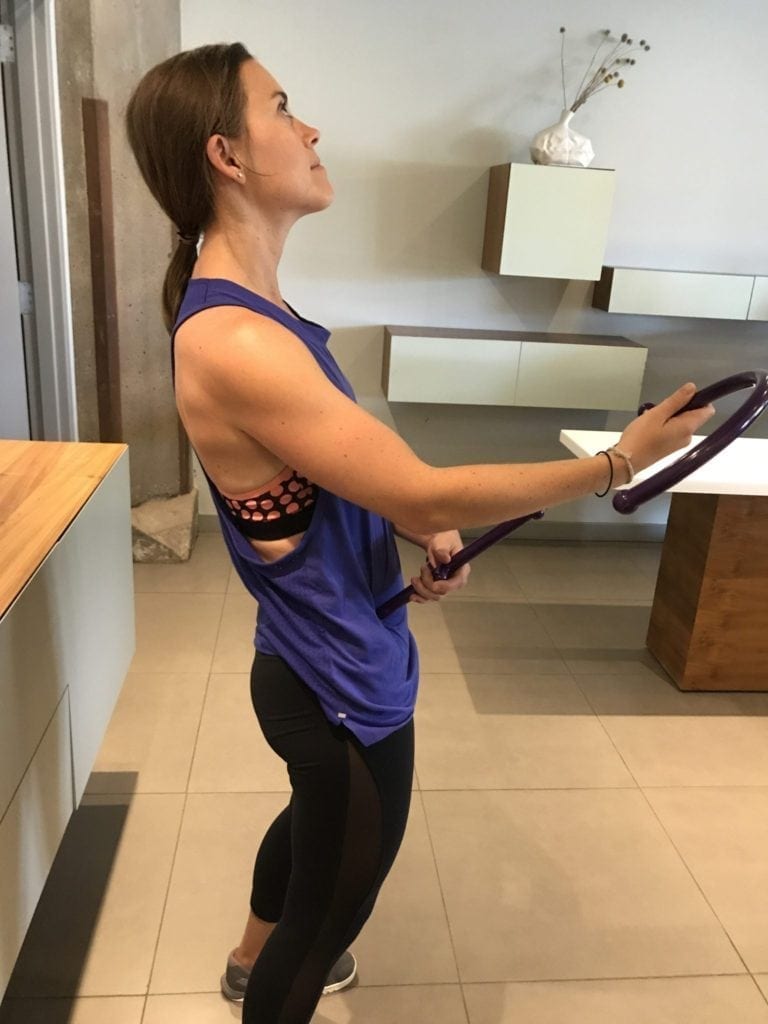
If you’re a runner, yogi, or desk work warrior with tight hips, questions on how to #DelosYourself or more targeted therapy can be directed to [email protected]. If you missed our last #delosyourself post on tech neck, you can check it out here.












